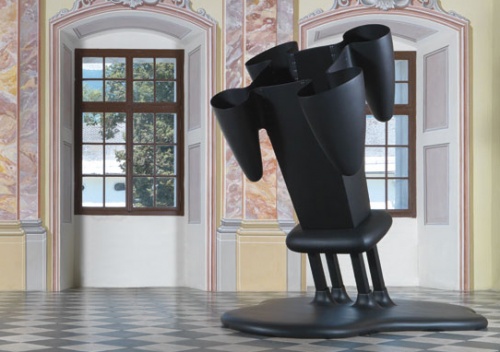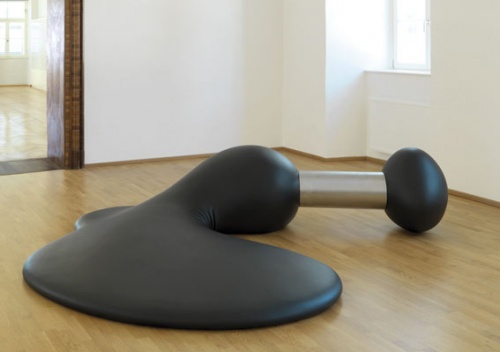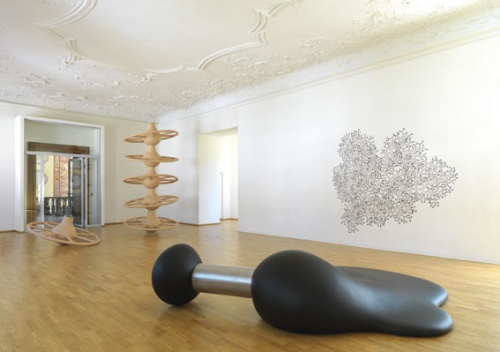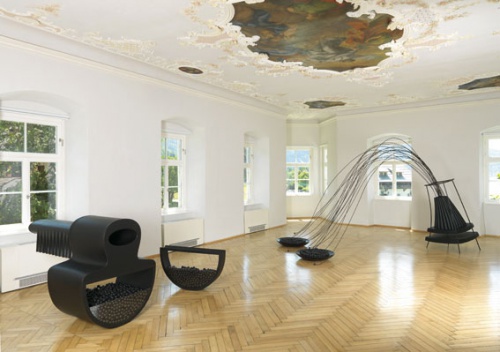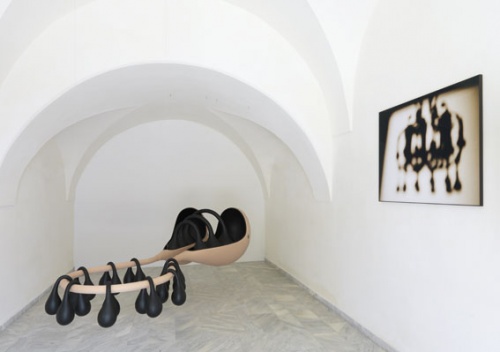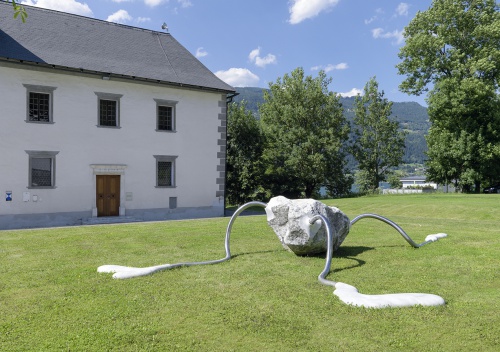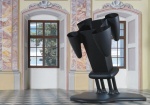 I wanna go home, 2011; fibre glass, imitation leather, steel, PU; 240 x 220 x 270 cm
I wanna go home, 2011; fibre glass, imitation leather, steel, PU; 240 x 220 x 270 cm
Photo: Thomas Gorisek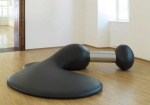 Catch me if you can, 2011; PU, aluminium; 50 x 285 x 235 cm
Catch me if you can, 2011; PU, aluminium; 50 x 285 x 235 cm
Photo: Thomas Gorisek Aequilibration, 2008 (left), Catch me if you can, 2011 (right)
Aequilibration, 2008 (left), Catch me if you can, 2011 (right)
Photo: Thomas Gorisek big mama, 2004 (left), ...elsewhere, 2004 (right)
big mama, 2004 (left), ...elsewhere, 2004 (right)
Photo: Thomas Gorisek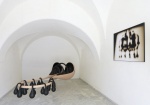 shelter, 2006; fibre glass, aluminium, foam rubber, textile; 80 x 320 x 140 cm
shelter, 2006; fibre glass, aluminium, foam rubber, textile; 80 x 320 x 140 cm
Photo: Thomas Gorisek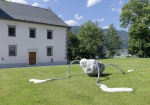 SBKT 190508, 2008; Krastal marble, high-grade steel; approx. 140 x 800 x 600 cm
SBKT 190508, 2008; Krastal marble, high-grade steel; approx. 140 x 800 x 600 cm
Photo: Thomas Gorisek
I wanna go home
, Stift Ossiach, 2011
...
Questions as to home and a sense of belonging are recurring themes in the artist’s work. In the exhibition with the title "I wanna go home" Julie Hayward addresses various aspects of "coming home". These imply desires, ideals, social codes and related illusions. Here humor plays an important role for the artist along with a critical irony, which adopts a critical distance, something that is also reflected in her titles. "Being at home in the world – or better: searching for home – also implies something unhomely or uncanny," as the cultural journalist Andreas Höll has observed. "In the familiar environment of home there always looms the unknown outside world, something alien. (...) This is the critical point from where Julie Hayward’s works take off. They play with the intricate tension between coming home and a sense of being forlorn, coming into one’s own and self-alienation, encounter with the familiar and something alienating." The uncanny is linked with familiar feelings and everyday associations and translated in an ironical-humorous way into her formal repertory. One could also say, following Lucas Gehrmann: "Julie Hayward brings two languages together, that are in an (illegitimate) disequilibrium in our civilization: the rationalist logic (as the dominant, because generally acquirable system for "describing" the world) and the (non-determinate) logic of poetic, creative, emotional thought."
...
show entire text
Questions as to home and a sense of belonging are recurring themes in the artist’s work. In the exhibition with the title "I wanna go home" Julie Hayward addresses various aspects of "coming home". These imply desires, ideals, social codes and related illusions. Here humor plays an important role for the artist along with a critical irony, which adopts a critical distance, something that is also reflected in her titles. "Being at home in the world – or better: searching for home – also implies something unhomely or uncanny," as the cultural journalist Andreas Höll has observed. "In the familiar environment of home there always looms the unknown outside world, something alien. (...) This is the critical point from where Julie Hayward’s works take off. They play with the intricate tension between coming home and a sense of being forlorn, coming into one’s own and self-alienation, encounter with the familiar and something alienating." The uncanny is linked with familiar feelings and everyday associations and translated in an ironical-humorous way into her formal repertory. One could also say, following Lucas Gehrmann: "Julie Hayward brings two languages together, that are in an (illegitimate) disequilibrium in our civilization: the rationalist logic (as the dominant, because generally acquirable system for "describing" the world) and the (non-determinate) logic of poetic, creative, emotional thought."
...
show entire text
